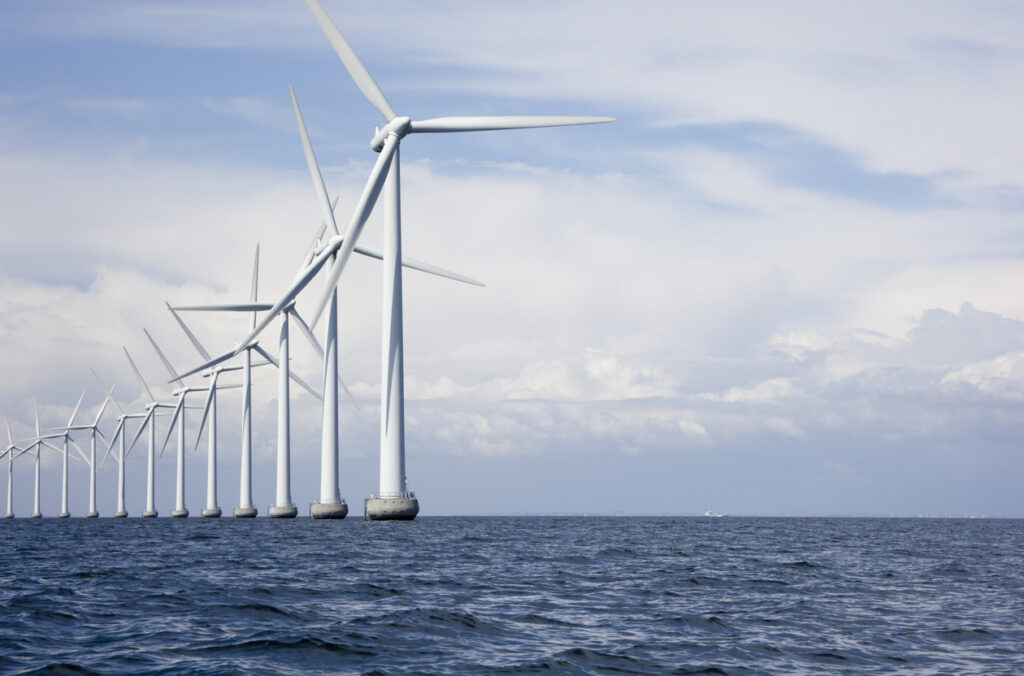The global energy transition from fossil fuels to green energy requires huge investment across the energy supply chain, and notably in renewable electricity generation.
Through 2023, renewables development faced a range of headwinds, including a dramatic rise in funding, and construction costs for offshore wind projects. This has led to several large-scale offshore wind projects in the US and Europe being cancelled, with others at risk of cancellation or delay. Given the importance of offshore wind rollout for global CO2 reduction, we believe there is a need to appropriately compensate developers for higher construction costs and to introduce mechanisms to protect against further rises. However, we see risks regarding the timing of the policy response.
Offshore wind power forms an important part of meeting energy transition goals. Bernstein Research, a leading US research and brokerage firm, estimates that out of the $18 trillion to be spent on renewable power generation between 2023 and 2050, over $2 trillion will be focused on offshore wind. In Europe, the goals regarding renewables require over 100GW of offshore wind power by 2030, up from 17GW today. Offshore wind’s place in the energy mix is important as it delivers consistent energy (thanks to more predictable wind conditions over the ocean) and does not take up land resources (lessening the “Not in My Back Yard” resistance that is often encountered with large-scale infrastructure projects).

The contracts attached to offshore wind farms take two forms: 1) Private Power Purchase Agreements (PPAs) that are signed with corporations looking to secure long-term energy contracts, and 2) Public PPAs which are signed with governments, often as part of an auction process with price caps and/or subsidy mechanisms. The contracts are long-term (averaging 20 years) and are designed to incentivise developers by providing certainty.
In Europe, public PPAs offer some inflation protection (albeit, imperfect) in offshore wind projects, but in the US contracts have been fixed price and developers have been exposed to inflation during construction and operating phases. This has made many US projects uneconomic and has led to developers walking away from projects that have been awarded over recent years (with considerable break fees to be paid to contractors and counterparties).
Recent auctions have seen mixed results. The latest round of UK auctions, announced in September this year, had no successful bids as the price cap was not high enough to attract bidders, and UK policy makers are being forced to rethink price caps. In other countries there have been positive policy developments: France has introduced index-linked adjustment clauses to adjust PPA prices to match inflation for components; and New York recently announced its Round 3 results, which included inflation protection, during the development phase of the project. A renewed focus on improving timelines has emerged as well, with Europe’s “Wind Power Action Plan” seeking to shorten permitting timelines.
Beyond policy response there have been signs that capex pressures may be easing. Steel prices (which make up over 80% of the materials in an offshore wind farm) have fallen more than 50% in the past two years (after rising over 200% in the previous two years).
Despite these positive developments it appears as though the policy response has been too slow. Ørsted (the world’s largest offshore wind developer) recently announced it was cancelling its 1.1GW Ocean Wind 1 project in New Jersey, while taking an impairment and announcing contract cancellation costs. Many other projects have been cancelled as well. Some investors are writing off the sector as uneconomic, but we believe long-term offshore wind projects will provide appropriate risk-adjusted returns to developers.
To successfully move forward and hit the targets set for offshore wind, the contract prices on projects under development likely need to increase by 40-50% and future projects need to include inflation protection mechanisms. In addition, permitting processes need to be accelerated to shorten development timelines to increase certainty for developers, allowing them to lock in financing costs and project budgets. We see material short-term risks regarding appropriate policy responses being implemented, but we also believe this will be essential to achieving medium and longer-term carbon reduction targets.



